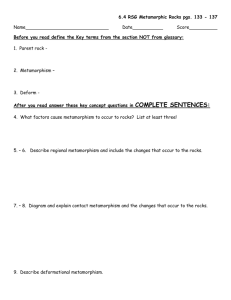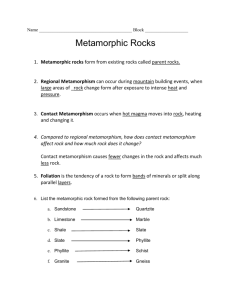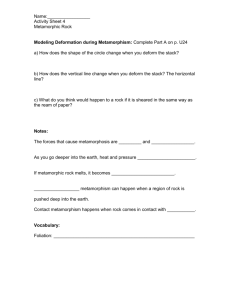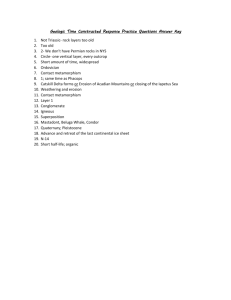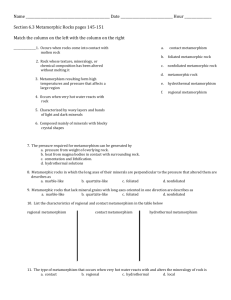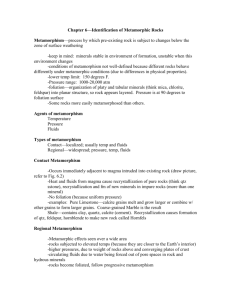Note: Chemical Nomenclature
advertisement
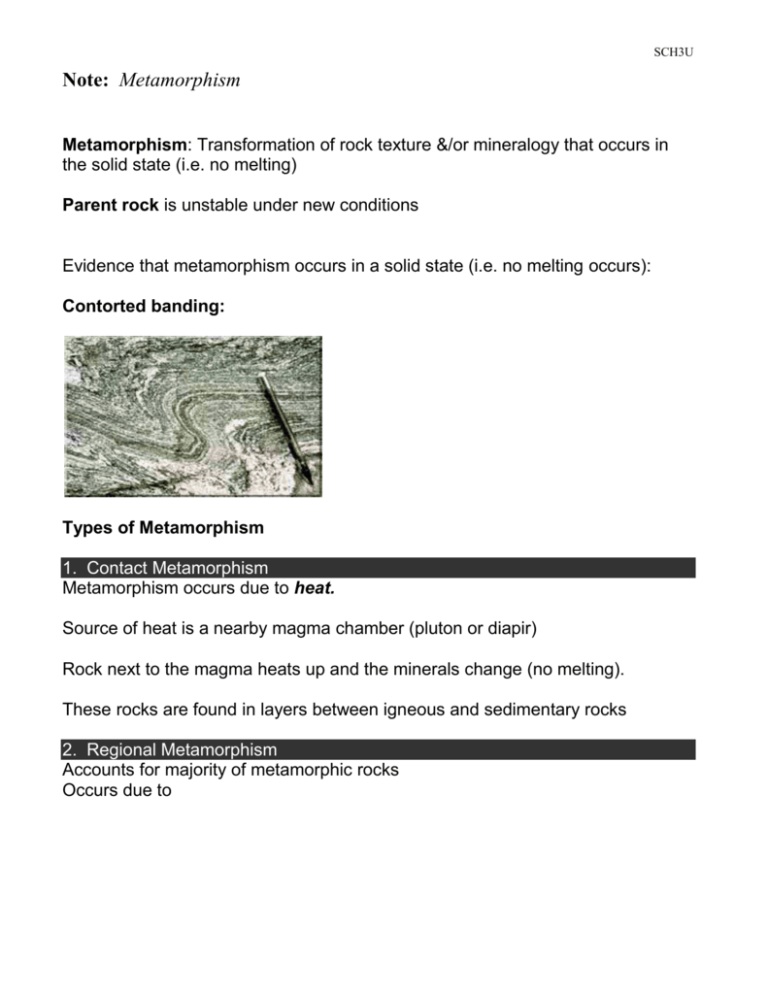
SCH3U Note: Metamorphism Metamorphism: Transformation of rock texture &/or mineralogy that occurs in the solid state (i.e. no melting) Parent rock is unstable under new conditions Evidence that metamorphism occurs in a solid state (i.e. no melting occurs): Contorted banding: Types of Metamorphism 1. Contact Metamorphism Metamorphism occurs due to heat. Source of heat is a nearby magma chamber (pluton or diapir) Rock next to the magma heats up and the minerals change (no melting). These rocks are found in layers between igneous and sedimentary rocks 2. Regional Metamorphism Accounts for majority of metamorphic rocks Occurs due to SCH3U Confining pressure: Compressive Stress: force is applied in opposite directions Elongate or platy minerals form during re-crystallization Results in a “foliated” texture Source of compressive stress: 3. Hydrothermal Metamorphism Hot water seeps between grains of rock or in rock joints Metamorphic Rock Textures (i) Foliation: Types of foliation: 1.Slaty: rock splits easily along flat, parallel planes. SCH3U 2. Schistose: visible platy or needle-shaped minerals - can be folded and does not split easily 3. Gneissic: during metamorphism, minerals separate into light and dark layers. Metamorphic rocks that you should know of: Foliated: Slate Phyllite Schist Gneiss Non-Foliated Marble Quartzite Hornfels Practice #1 SCH3U Practice #2 Practice #3 SCH3U


